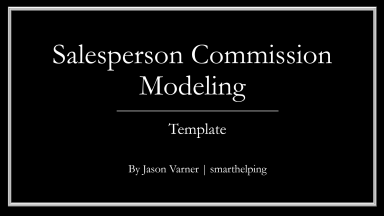
Last version published: 22/12/2023 09:12
Publication number: ELQ-12851-5
View all versions & Certificate

Salesperson Commission Sensitivity Analysis
Visualize the impact for salesperson and company when using fixed rate commission vs. tiered rate commission structure.
Further information
Any company that pays commissions to salespeople.
When gross profit is quantifiable per salesperson activity.
If your salespeople are not incentivized based on gross profit generation.





